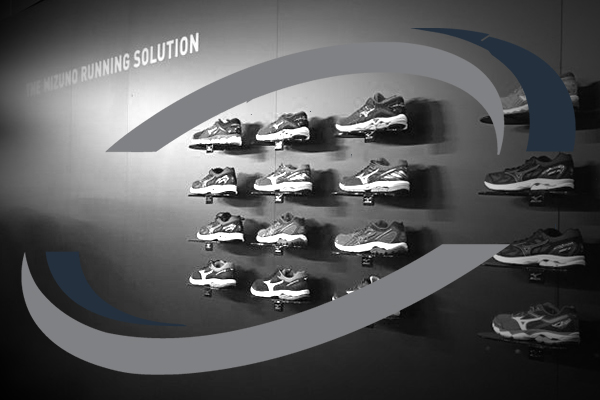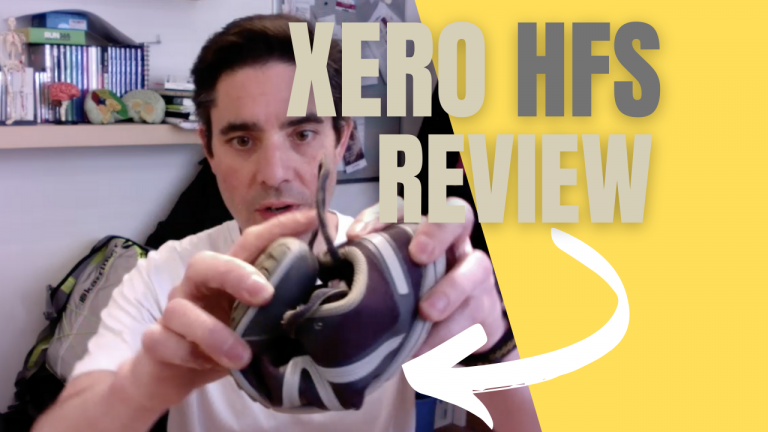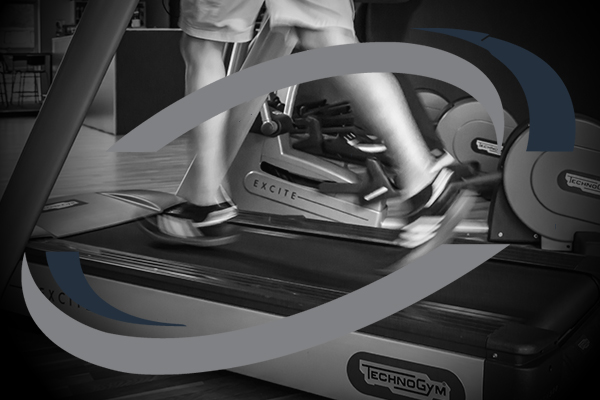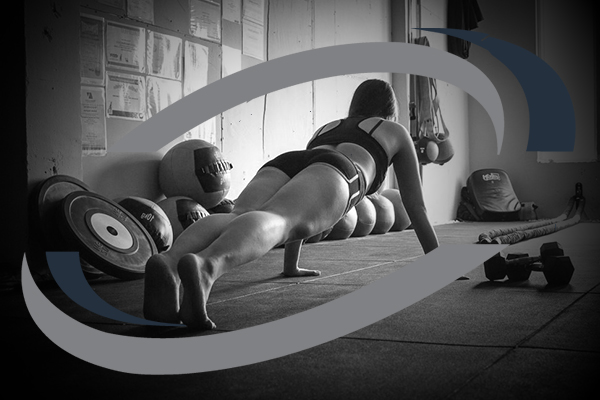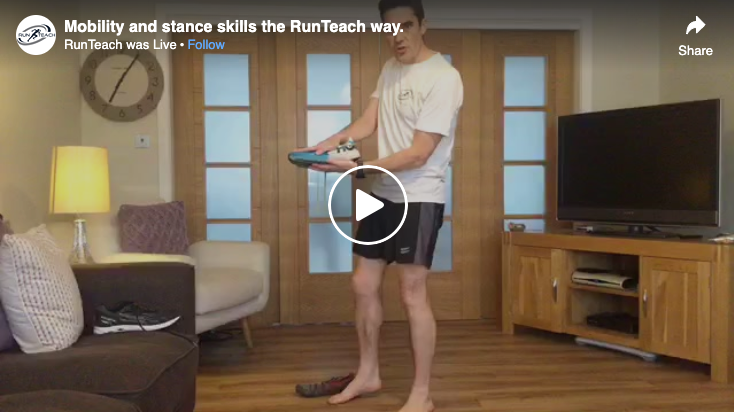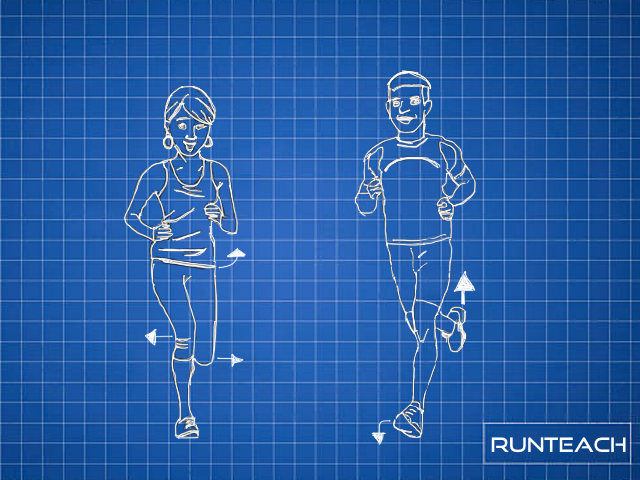Which running shoes are right for me?
Written by: Chris O’Brien
Choosing running shoes can be confusing. I saw this first hand recently (Sunday 25th Feb 2018), when I had the pleasure of working alongside the guys at Mizuno at the Triathlon Show London. We were carrying out running assessments using the dorsaVi sensor technology that we use at RunTeach.
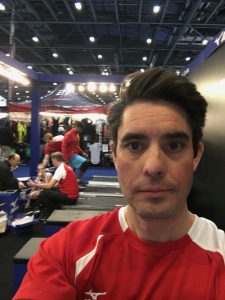
Mizuno use the dorsaVi technology to highlight the differences in loading forces and left/right symmetry in different shoe types. They call this service the Mizuno Running Solution, and it works well to show these differences.
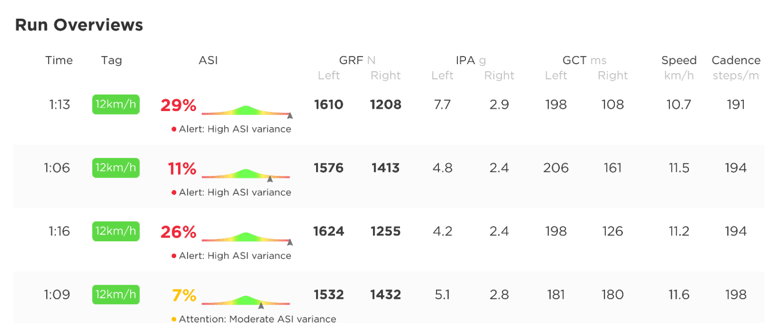
They then hope to prove that a new pair of Mizuno shoes are better (more efficient, more symmetrical, less impact force, etc) than the runner’s current pair of shoes. In most assessments, from what I saw, this was the case. In all 7 assessments that I carried out, I saw an improvement when the runner wore the Mizuno shoes. Some of this was probably because they were new shoes, but thsi is fine as it showed the runner it was time to change their shoes.
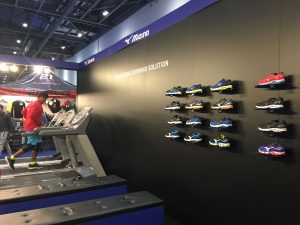
You may be thinking: “how does that help me?”. To answer that, we first need to look at the general shoe types, and go from there.
Shoe types
In general, there are 3 shoe types:
- Neutral Shoes
- Stability Shoes
- Motion Control Shoes
Within the neutral category, we also have:
- Maximalist (what we see as a standard running shoe)
- Minimalist (simple shoe such as Vibram, Vivobarefoot, etc)
In reality, there is some crossover and within each category there are different levels of cushioning – even in minimalism, which may sound odd but is true. For now though, let’s just concentrate on standard running shoes. These are what most of us use. So, what do the main categories actually mean?
Neutral:
Whether they have a high level of cushioning or not, neutral shoes only provide minimal support, and generally allow your feet to move as nature intended. This means that your feet will naturally pronate (your arches flatten) as your foot goes through the gait cycle. More on this in a bit.
Stability:
These shoes tend to offer a medium level of support in order to limit the amount of pronation the foot can do. Typically this is done by having some form of higher density material near the arch of the shoe to limit the foot compression. Stability shoes tend to be prescribed for people with a moderate level of foot over pronation.
Motion Control:
This type of shoe offers the maximal amount of stability, and aims to significantly reduce the compression of the arch of the foot.
So how can I tell what I need?
And this is the million dollar question! It has become the norm for shoe retailers to offer a certain level of gait analysis in order to fit you for the right type of shoe from the categories above. But this has major flaws, not least because they tend to only look at your feet and not your whole body.
Some stores also use outdated and unproven tests such as the wet test. This involves the runner standing barefoot in some water to wet the soles of their feet, and then standing on a special piece of paper than will leave the watermarks. The test shows how the arches of the runner look (collapsed/flat, ‘normal’, high), and this is then supposed to help with shoe selection. The problem with this is that it is completely unfounded in the research, and all the latest research points to there being very little significant difference in the degrees of pronation due to arch height. There simply isn’t enough evidence to base shoe selection on a test like this.
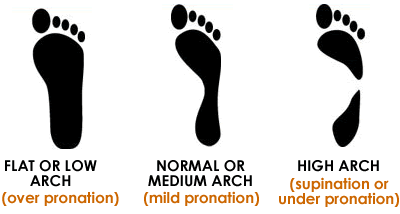
At the Triathlon Show I heard people referring to themselves as over pronators, having flat feet, and many other terms that would justify them being put into either the stability or motion control categories. But is that right?
Well, no. What is now being discovered is that incorrect prescription of stability and motion control shoes can lead to higher injury rates. Stability and motion control shoes should only be recommended following a correct prescription. And by correct prescription, it is meant that there should be a very clear reason why a runner is told to wear anything other than a neutral shoe. Just because their foot over pronates is simply not a good enough reason, and here’s why… what is over pronation?
It is perfectly normal for our foot to pronate when we walk and run. We are all different, and the individuality of our foot structures means that we will pronate slightly differently from each other. In fact, we can have different degrees of pronation between our own two feet. Lets see what neutral, pronation and supination is:
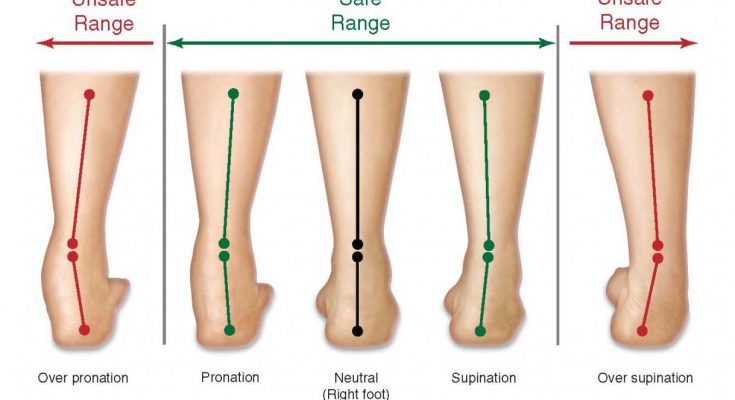
The graphic above mentions a safe range and an unsafe range. However, the lack of robust research in this area doesn’t really help. Of the two most reliable studies, one found injury rates increased with over pronation, and one study found they didn’t. This means we can’t actually draw any conclusions from this at all.
So if the scientists can’t draw any conclusions, how can a running shoe assistant in your local store recommend you wear stability or motion control shoes from a quick visual assessment of just your feet? Answer: they can’t.
And there’s more. Over pronation itself may not even be the issue at all. It may be that it is excessively prolonged pronation that is the bad egg. That is, if your foot carries on in a pronated position after the mid stance of the gait cycle. See, your foot is designed to lock in a supinated position (see above) immediately before it strikes the ground. This is to provide a solid structure to land on. Then at foot strike, the foot unlocks and begins to supinate. By mid stance, it should start to decompress and make its way back to a supinated position, locked and ready for toe-off. But if the foot remains in a pronated position for too long after mid stance, it is argued that the tibia will be over-rotated and put under more stress than designed. It is this, some claim, that is the cause of the injuries.
To add more murk into the already muddying waters, there is an ongoing debate as to whether foot mechanics drive the mechanics higher up the chain (the knee and hip for example), or if it is the other way round. To explain a bit further….
It is claimed that over pronation causes the tibia (shin bone) to rotate inwards excessively (as seen with the prolonged pronation). This in turn will put stress on the knee joint, and further up the chain can have an affect on the hips, lower back and even the shoulders.
But hang on. Why can’t it be the other way round? Why can’t over or prolonged pronation be a symptom of something happening further up. Why can’t it start with the hips or knee, and end with the foot? Actually, in many cases this is what happens. The foot is being driven into an unnatural position because of something happening elsewhere on the body. If you are only looking at the feet, you are going to miss this crucial information, and this could have serious consequences as far as injury risk goes.
Help! I’m more confused than ever! How do I pick my shoes?
Well, the most recent discussions from the current experts in the biomechanics arena of running bring both good news and some not so good news. Let’s start with the not so good news:
There is no evidence at all that there is actually any reliable way to prescribe running shoes. This was found in 4 different studies between 2010 and 2015.
Here’s the good news…
Foot pronation is not associated with injury risk in novice runners wearing a neutral shoe: 1-year prospective cohort study. (Nielsen RO, Buist I, Parner ET, et al Foot pronation is not associated with increased injury risk in novice runners wearing a neutral shoe: a 1-year prospective cohort study Br J Sports Med 2014;48:440-447.)
Pick a shoe that is comfortable for you as this is most likely to be the optimal shoe for you.
Once you find a shoe that is comfortable, get another pair! Some research has shown that rotating your shoes can provide up to a 39% reduction in the risk of injury. Now that’s a very good reason to go shopping!!!
Conclusion
OK, so perhaps not so conclusive. But hopefully this post has alerted you to be more aware when choosing shoes in a running shop. Just because the staff member has stuck you on a treadmill, looked at your feet (including video) and the recommended a shoe type, you shouldn’t feel that you need to go with that recommendation. This doesn’t mean they are necessarily wrong in their recommendation. And it is fair to say there are some great people doing these visual assessments – many have a lot of experience. But, this is a complex area that goes beyond just looking at someone’s feet.
First, look at what type of shoe you are currently wearing – neutral, stability, motion control. Have you had any pain while running in them. If not, either stick with that type of shoe (but of course feel free to choose a different brand or model) or if they are not a neutral shoe, perhaps it’s time to try a neutral shoe. Think about why you chose your current shoes and let that be a guide.
If you do have pain in your current shoes, then it’s time to find out why before you buy your next pair. As runners, we often cite incorrect footwear as our number one reason for injury, but often the problem is somewhere else. Footwear is usually quite far down the list.
Next, make sure you can go for some kind of run in the shoes, even in that’s on the treadmill or just on the street outside the shop. Most decent shops will let you do this. Are they comfortable? Let this be your lead on making a final decision. If you are unsure, try some different ones. Try on some different types (neutral, stability, motion control), even though you don’t think they are a good match. It is all feedback on how different shoes feel, and this in itself can be a good guide.
Personally, I would always like to see people start in a neutral shoe to see how it feels. If it doesn’t feel right, then go with your instinct on the other categories – just be careful about what you are being told.
Finally, if you do feel it is time to discover more about how you run we can help. If your current running style/technique is causing you problems or you want to get faster, we would love to welcome you to our offices for an in-depth running and movement assessment. You can even bring along a couple of different types of shoe so we can see how they affect the forces and symmetry as you run.
On a final note, I would like to say a huge thanks to the guys at Mizuno for welcoming me along. I would also like to say a big thank you to all the runners I assessed, and I trust you were happy with your shoe selections and the service you received from us all.
It is good to note that Mizuno’s best selling road shoe is their Wave Rider. This is their neutral shoe, so it shows that with Mizuno at least, runners aren’t being pushed into the more expensive stability and motion control shoes.
Neither RunTeach or I have any affiliate with Mizuno, nor do we earn any commission or other income from them.

